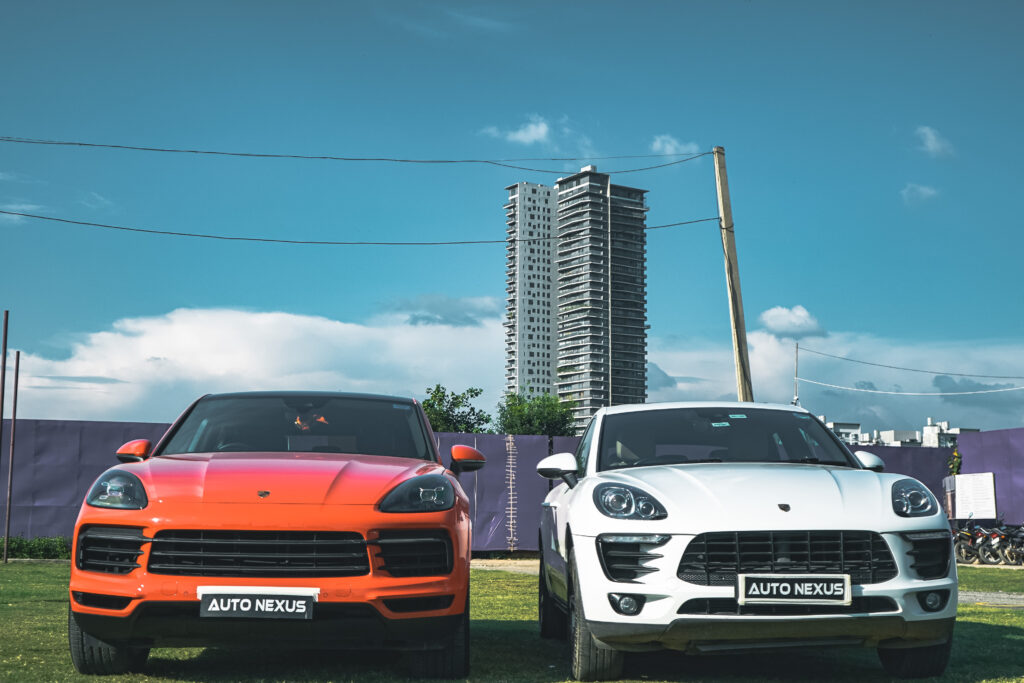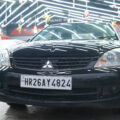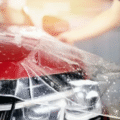Car Wrapping vs. Paint Protection Film – Which One Should You Choose?
Do you own a car? If yes, then you must be wondering that when it comes to protecting your car’s paintwork and enhancing its appearance, two popular options are car wrapping and paint protection film (PPF). Both have their advantages, but which one is right for your car? In this blog, we’ll break down the differences between car wrapping and PPF, helping you make an informed decision about which option best suits your needs. Whether you’re looking to change your car’s look, protect its paint, or both, we’ve got you covered.
What is Car Wrapping?
Let’s first understand the basics of Car Wrapping:
Car wrapping involves covering your car’s original paint with a large vinyl film that can change the color and appearance of the car. This film is applied to the vehicle’s body and can be customized in terms of color, design, and finish. It’s a temporary solution that can be removed later without damaging the underlying paint.
Key Features of Car Wrapping:
The key features of car wrapping are as follows:
- Aesthetic Customization: One of the biggest reasons people choose car wrapping is to give their vehicle a unique look. You can select from various finishes such as matte, gloss, satin, or even textured wraps like carbon fiber or brushed metal.
- Temporary Option: Unlike a new paint job, wrapping is not permanent. If you are tired of the basic wrapping process or want to switch to a different color or style, you can get it removed.
- Protects Original Paint: While car wrapping protects the original paint from minor scratches and environmental factors, it does not provide as much protection as paint protection film.

Benefits of Car Wrapping:
Car Wrapping has enormous benefits, including:
- Customizable Designs: Car wraps offer endless design possibilities. From full-color changes to custom graphics, wraps can turn your vehicle into a work of art.
- Non-Permanent: If you want to change your car’s look frequently, car wrapping is a great option. Moreover, you can remove it whenever you like, leaving your car’s original paint intact.
- Cost-Effective: Compared to a full re-spray (new paint job), wrapping is often more affordable, especially if you’re looking for a significant change in appearance.
- Easy Maintenance: Cleaning a wrapped car is relatively easy. Just a simple wash and your car will look as good as new.
When to Choose Car Wrapping:
- If you’re looking for a complete color change or custom designs.
- If you want to protect the original paint but plan to switch up your car’s look after a few years.
- If you want to give your car a fresh appearance without committing to a permanent change.
What is Paint Protection Film (PPF)?
Let’s understand the basics of Paint Protection Film first:
Paint Protection Film (PPF) is a transparent, durable film that is applied over the vehicle’s paintwork to protect it from scratches, chips, and environmental damage. PPF is typically made of polyurethane and acts as a protective barrier between the car’s paint and external elements like rocks, bird droppings, tree sap, and road debris.
Key Features of Paint Protection Film:
The Key features of paint protection fim are as follows:
- Clear Protection: PPF is designed to be nearly invisible once applied to the car’s surface, allowing the car’s original paint to show through while protecting it from damage.
- Durable: PPF is known for its strength and ability to resist scratches, chips, and abrasions. It can withstand daily wear and tear without losing its protective qualities.
- Self-Healing: Many PPF products feature self-healing properties, meaning small scratches and swirl marks will disappear over time with exposure to heat from the sun.
Benefits of Paint Protection Film:
Paint Protection Film has enormous benefits, including:
- Ultimate Protection: PPF provides a layer of protection against various types of damage, including rock chips, scratches, and stains, keeping your car’s paint looking pristine.
- Preserves Original Paint: Since the film is clear, it allows the car’s original paint color to shine through while keeping it safe from potential damage.
- Self-Healing Technology: Some high-quality PPFs have self-healing properties, which allow the film to repair itself when exposed to heat, making it even more durable and long-lasting.
- Easy to Maintain: PPF is resistant to dirt, dust, and water, which makes the procedure of car cleaning much easier. Regular washing will keep the car looking brand new.
When to Choose Paint Protection Film:
- If your main concern is protecting your car’s paint from scratches, chips, and environmental damage.
- If you want to maintain the car’s original appearance but need extra protection.
- If you’re looking for a more permanent solution that doesn’t change the car’s look but preserves its condition.
Key Differences Between Car Wrapping and Paint Protection Film
The key differences between car wrapping and paint protection are as follows:
1. Purpose
- Car Wrapping: Primarily for aesthetic purposes. It changes the appearance of your vehicle, allowing for creative designs and color changes.
- Paint Protection Film: Primarily for protection. It’s designed to preserve the condition of your car’s original paint, preventing damage from environmental factors.
2. Appearance
- Car Wrapping: Offers a wide variety of colors, designs, and finishes, including matte, gloss, satin, or textured styles. It completely alters the appearance of your car.
- Paint Protection Film: Transparent and nearly invisible, PPF does not alter the car’s appearance but adds a layer of protection to the existing paint.
3. Durability
- Car Wrapping: While it protects the car’s paint from minor scratches, it is less durable than PPF. It can fade over time due to exposure to the sun and other weather elements.
- Paint Protection Film: Extremely durable and long-lasting. PPF is designed to withstand everyday wear and tear, including road debris, bird droppings, and UV rays.
4. Cost
- Car Wrapping: Generally less expensive than a full re-spray (paint job) but may be more expensive than PPF in some cases. The cost can vary depending on the complexity of the design and the size of the vehicle.
- Paint Protection Film: The cost of PPF depends on the quality and coverage. While it’s more expensive than a car wash, it is typically more affordable than wrapping when considering long-term protection.
5. Maintenance
- Car Wrapping: Requires regular cleaning and care to maintain its appearance. It can get scratched or damaged, and if it gets torn, it might need to be replaced.
- Paint Protection Film: Requires minimal maintenance. It’s self-healing and protects the paint from dirt and debris, making it easier to keep it clean.
6. Removal
- Car Wrapping: Can be easily removed without damaging the original paint, though it may take time and need careful handling.
- Paint Protection Film: Removal can be more complex and may require professional help, especially if the film has been on the car for several years.
Which One Should You Choose?
Consider Car Wrapping If:
- You want a drastic change in your car’s appearance and enjoy customizing your vehicle.
- You plan to change the look of your car every few years and want the option of easy removal.
- You’re looking for a more affordable option for changing the car’s color or adding designs without re-painting.
Consider Paint Protection Film If:
- You want to protect your car’s paint and preserve its original look.
- You live in an area with harsh weather conditions or lots of road debris.
- You’re looking for a long-term solution that offers durability, easy maintenance, and reliable protection.
Conclusion
Car wrapping and paint protection film are both excellent choices for different requirements and preferences. Car wrapping is ideal for those who want to change their car’s appearance, while paint protection film is perfect for those looking to protect their vehicle’s paint from scratches, chips, and environmental damage. Ultimately, your decision should depend on your priorities: aesthetics, protection, or both. By understanding the key differences between the two, you can make an informed choice and keep your car looking its best for years to come.










